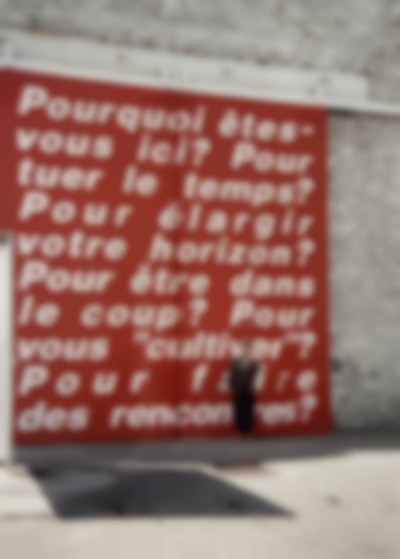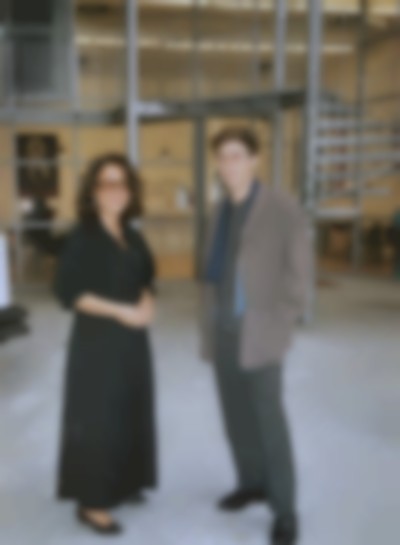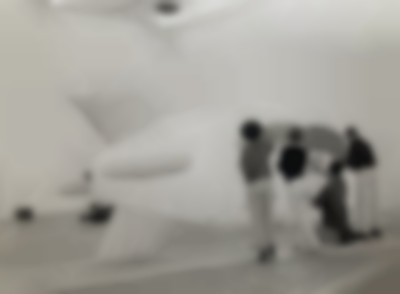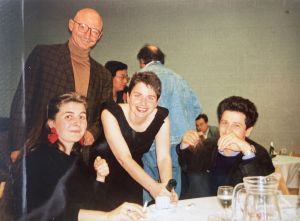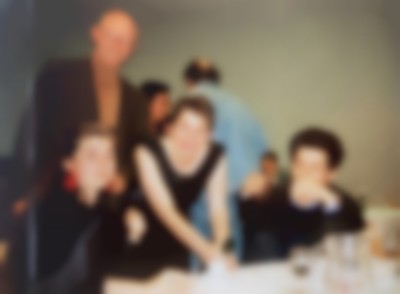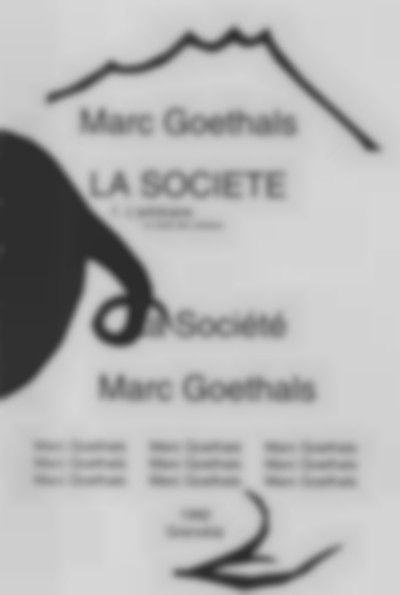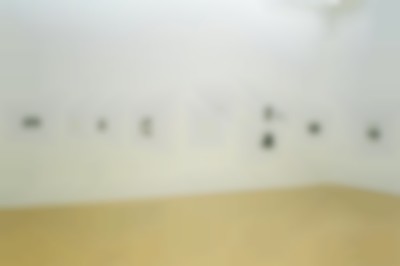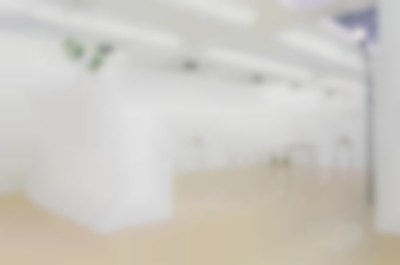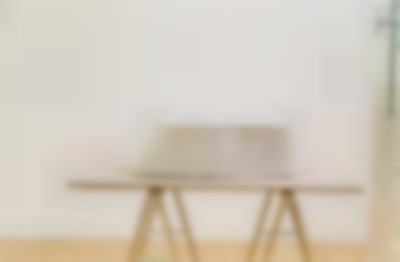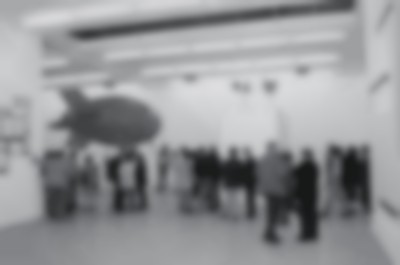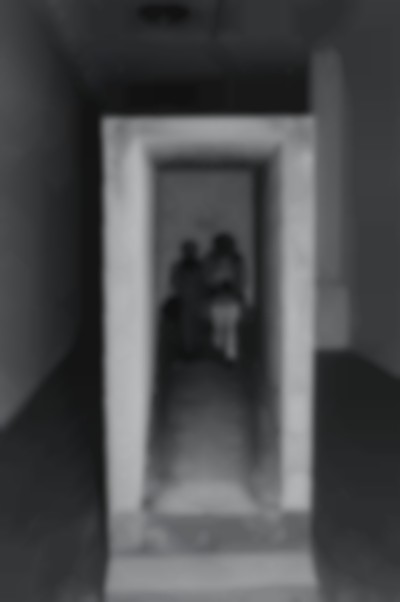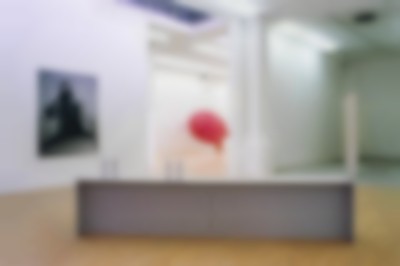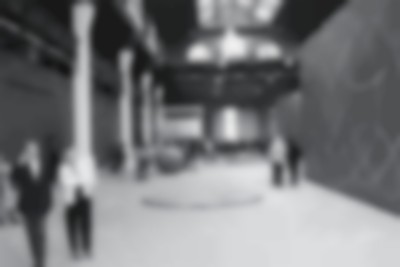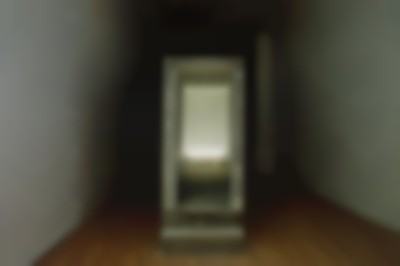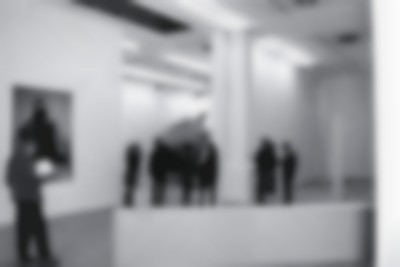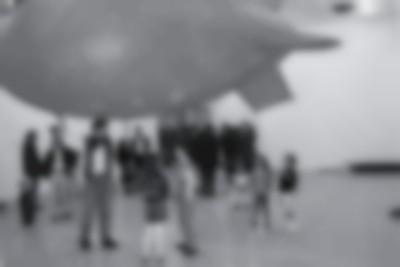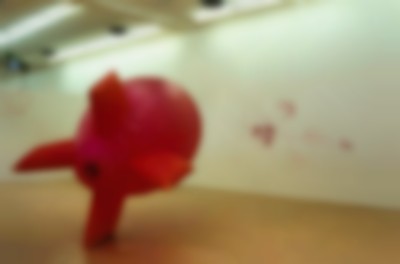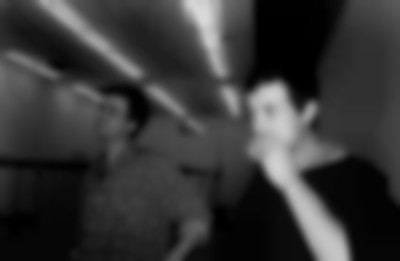Session 4: presentation
| Session | 4 (1991–1992) |
|---|---|
| Participants |
Hélène Chouteau-Matikian |
| Direction |
Adelina von Fürstenberg |
| Session website | – |
| Coordination | – |
| Tutoring | – |
| Educational team | – |
| People met |
Vito Acconci (artist) |
| Travels |
Milan-Turin (oct. 1991) |
Entre Chien et Loup
| Project |
Entre Chien et Loup |
|---|---|
| Presentation |
The exhibition Entre Chien et loup presents the work by young European and American artists. |
| Format |
Collective exhibition |
| Date |
6 June-12 August 1992 |
| Location |
Magasin-CNAC |
| With |
Art Orienté Objet |
Related archive
Documents
- Note préparatoire (FR) [pdf, 1.06 MB]
- Projet de texte pour l’exposition par Emmanuelle Koening (FR) [pdf, 83.17 KB]
- Projet de texte pour l’exposition par Thomas Kocek (FR) [pdf, 78.72 KB]
- Projet de texte pour l’exposition par Hélène Chouteau (FR) [pdf, 105.54 KB]
- Projet de texte pour l’exposition par Isabelle Dupuy (FR) [pdf, 34.06 KB]
- Projet de texte pour l’exposition par Monica Regas (FR) [pdf, 66.67 KB]
- Leaflet-poster of the exhibition “Entre chien et loup” recto-verso [pdf, 4.55 MB]
- Publication by Marc Goethals produced for the exhibition “Entre chien et loup” (NL/FR) [pdf, 6.72 MB]
Photographs
-
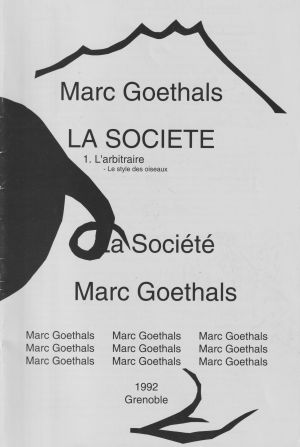
[1992]
Publication -
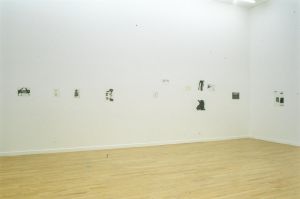
[1992]
Exhibition view -
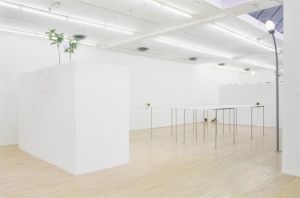
[1992]
Exhibition view -
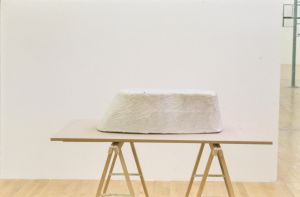
[1992]
Exhibition view -
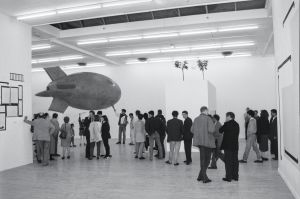
[06.06.1992]
Exhibition opening -
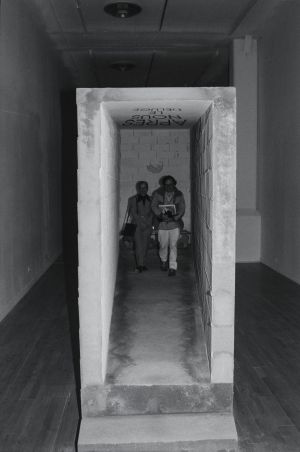
[06.06.1992]
Exhibition opening -
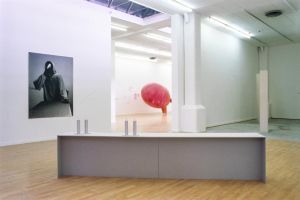
[1992]
Exhibition view -
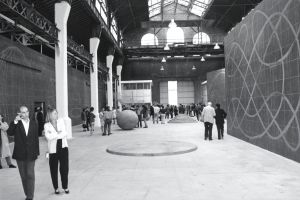
[1992]
Exhibition opening -
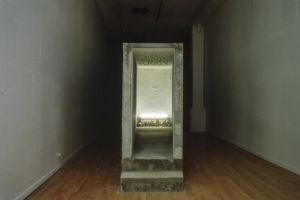
[1992]
Exhibition view -
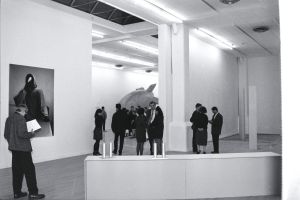
[1992]
Exhibition opening -
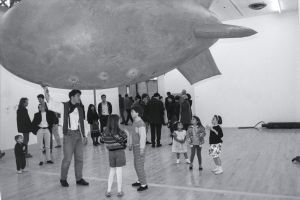
[Jun 1992]
Exhibition opening -
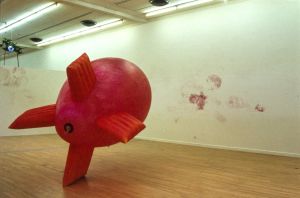
[1992]
Exhibition view -
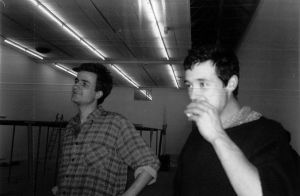
[1992]
Andreas Weiss et Jean-Marie Perdrix
Interview with Ronald van de Sompel
Interview with Ronald van de Sompel
by Asli Seven
Asli Seven: To begin with, I would like to ask you about your personal trajectory. How did you come to the École, where were you in your life at that moment, what brought you to the École?
Ronald van De Sompel: I remember it fairly well. During my philosophy studies, I was interested in cultural history and in various cultural disciplines. My thesis related to architecture and I was also interested in the visual arts, as well as in dance, music, etc. Shortly after my studies, I applied to do my civilian service. At the time, men in Belgium still had to do military service but you could do civilian service. So I did it in a place connected with the Museum of Contemporary Art in Ghent. It was called the Association for the Museum of Contemporary Art, which meant that it supported the museum with acquisitions, a bit like what we usually call friends of the museum. Small exhibitions were organized. I worked there as what you might call a gallery assistant, taking care of the space when it was open. Apart from the periods of installation and dismantling, I had plenty of time to read. There were not so many visitors, and there was a library, so I read a lot about contemporary art. Later, I decided to write for a local newspaper and for art magazines, which actually started when artists or curators asked me to. Gradually I became more and more familiar with the world of contemporary art. There were lectures organized by this association and one day, Jacques Guillot gave a talk. He was the founder of Le Magasin, and the first director, I think.
AS: We have this very interesting document from 1985. It was the first draft of his plans for the École du Magasin, typewritten.
RvdS: Ah, really? Anyway, he came to talk about Le Magasin, and he also talked about the École. At the time, there had been only two sessions. At that time, I was working mainly as an art critic, and I felt limited in that respect, in the sense that I was only writing. Also, I was based in Belgium, I was writing in Flemish, and that language doesn’t have a large audience. In other words, there are only so many reviews you can write. From a financial point of view, it was not very interesting either. When I heard Jacques Guillot speak, it seemed like a possible way out of my limitations. Also, sometimes people would talk to me and say: “Yes, you’re always writing and criticizing but that is easy to talk from the sidelines.” Jan Hoet was the artistic director of S.M.A.K. at the time and he was a leading figure in the arts. He was one of these people who talked to me this way, I suppose because I sometimes wrote critical pieces with an ironic undertone. He always liked to fight, and at one point he said: “You know, maybe you should make an exhibition.” It may sound anecdotal, but I thought it might be an interesting move. But just after the visit of Jacques Guillot, it was already too late to apply for the next session of the École, or there was too little time to prepare – I don’t remember. But I had the chance to visit the students of that session.
AS: So you went to Grenoble before applying?
RvdS: Yes, I went to talk to the students. Denys Zacharopoulos was there. He was a curator and he was very present at the time. He is lives in Greece now, but I think he was living in Paris at the time. In any case, he was curating exhibitions in France. In the context of my activities as an art critic, I visited many exhibitions in France because then, in my opinion, a lot of interesting things were happening there. For example, I wrote a review of Le Diaphane, one of his exhibitions in Tourcoing. I also wrote a review of an exhibition by the Belgian artist Patrick Van Caeckenbergh in an art center in Thiers, Le Creux de l’Enfer, so I gradually got to know people in the French art world. So there was a kind of connection. Then the students told me a bit about their experience. I think there was Esther Schipper – or no, I think it was Grazia Quaroni who was there, and Frederic Montornès. And I also met the lady of Air de Paris…
AS: Florence Bonnefous?
RvdS: Yes. She gave me some tips. Then I went to the interviews for the fourth session.
AS: Who was interviewing you?
RvdS: Good question. There were a lot of people on the jury. It was quite impressive and a bit intimidating. We were sitting at a long table in the room above the bookshop. A very special table arrangement, if I may say so. They were on one side, I on the other. I think they were thirteen or fourteen of them, quite a lot, and they all asked questions. Adelina von Fürstenberg was there. She asked a question about the Lili Dujourie exhibition that had taken place there earlier. There was an Italian philosopher, Fulvio Salvadori, who asked a question about Jan van Eyck, as a joke: “What was the name of Jan van Eyck’s brother?” And then there was Olivier Zahm, who asked a question about The Play of the Unsayable, an exhibition by Joseph Kosuth in Brussels. Who else? I don’t remember very well. There were people representing different levels of French cultural policy. Some had regional positions, but also national positions, with representatives from Paris. At the last moment, one person could not come and was replaced by Laurence Gateau, the director of the art center in Thiers. Later I heard that she, Olivier Zahm and Fulvio Salvadori supported my candidacy. There were perhaps also one or two people from Le Magasin team. One of them was Yves Robert, the other Thierry Ollat. But I’m not sure anymore. I remember that Yves called me a day or so later to tell ma that I had been accepted. In fact, I was very surprised because I had the impression that I hadn’t been very good, probably because my French was not so great. Looking back, I realised that they had chosen people from different backgrounds. I studied philosophy, another person had studied sociology, another came from the film sector. So we were all complementary to each other. We also came from different countries, except for a larger group living in France. That was my feeling.
AS: It’s interesting because it opens up another question. The profession of curator was not as established at the time, I think there was also this aspect of trying to define a profession and recruiting people from different backgrounds may also have defined a position on what they thought curating was.
RvdS: Maybe it’s not related, but Adelina was working a lot with people of a non-Western background. This was also the atmosphere in France after the exhibition Les Magiciens de la Terre and, to a certain extent, she joined in. As far as we were concerned, however, we were all of European origin: two French, one Franco-German, one Italian, one Pole, one Belgian, and one Spanish. I am not sure if our names are in the brochure. It’s a leaflet about our exhibition, which I brought because you asked how it was announced.
AS: Can I take a picture? Entre Chien et Loup… This is another question, but let’s postpone it for now and talk first about the organisation of the year.
RvdS: There was a question about the dynamics between the participants. I don’t know if this was always the case, but over a period of ten months, everything changes. There were alliances and people who were seen by the others as friends ended up fighting. Things like that, professional and private alliances that changed in those ten months. I think having spent a lot of time in that space together at Le Magasin reinforced that.
AS: You mean up there in that room?
RvdS: Yes, that’s where we worked, but I’m also referring to being in Grenoble most of the time. We also traveled quite a lot together, in two cars or with a minivan. And this fact of traveling together also favoured a certain dynamic in the relationship. You have to make all decisions together, which leads to delays. At one point, some of us thought that we would never get anything done. Operating as a group rather than planning things on your own was integral to this experience and, I think, to the exhibition we made.
AS: Was the exhibition a collective project?
RvdS: The exhibition was a collective project and to a large extent informed through our research trips. During our travels, we thought about possible options.
AS: Did you do studio visits?
RvdS: Yes, studio visits but also visits to exhibitions or visits to curators – we met Hans Ulrich Obrist in St. Gallen, for example – that’s what I would still do today. Research became more and more important to me over the years in the sense that I started to do more research in libraries or online, before I did studio visits. At that time, the first contact with artists was quite important. Looking back, I feel that there was something special about making this exhibition, because the art and the artists we met in all these countries also gave us a connection to each other’s backgrounds. At the same time, everyone seemed to want to involve someone from his or her own context in this process. And this, I assumed, was part of the way the École worked. Everyone knows their own cultural context best, but they still want to relate it to others.
AS: When you say that you traveled a lot, it must have been in the region?
RvdS: Each of us, or most of us, planned a trip. Sergio organized a trip to Italy, me to Belgium and the Netherlands. For Switzerland, for example, I do not remember what happened: maybe it was Emmanuelle Koenig who took care of it. We eventually chose a Swiss artist, Silvia Bächli. We chose the group HaHa because we dit not want to only work with individual artists, but also with collectives. And then there was pressure to show French artists.
AS: Was the pressure from the French people or from the institution?
RvdS: From the institution, most probably because of the funding context of Le Magasin, which is obviously not unique in itself. Initially, we had conceived the idea of working with different models of collaboration between artists. We noticed that there were groups of artists, collectives. HaHa was one of them, but in the end, we could not or did not want to extend this principle to the whole. In Belgium or Poland, for instance, this tren was not present.
AS: So you ended up discovering new artists as well?
RvdS: Yes, many of the artists we invited were new to most of us, for example, the ones I mentioned before: Silvia Bächli and HaHa. Mariusz Kruk was clearly someone that Thomas Kocek, the Pole in our session, knew. The Italian group was strongly supported by Sergio Risaliti. I also introduced Marc Goethals, but none of us knew the others in advance, we met them for the first time during our travels. The concept of the exhibition was not predetermined: it did not precede the artists and their work but emerged from our research trips. We met artists that we found interesting, and that’s how we ended up with an exhibition. The title Entre Chien et Loup was more of a baseline, quite poetic actually, and referred to a certain kinship between the artists. We never explained the title.
AS [looking at the brochure]: While this one is the École’s project, these two are Le Magasin’s projects?
RvdS: Yes, they were announced together and took place more or less simultaneously. We had our exhibition in the galleries, and this was in La Rue, and this, I don’t really remember1 .
AS: Specifically, when you were at the École, what kind of education was there? Practical or theoretical?
RvdS: It was mostly practical, in the broadest sense of the word. The first few months we worked in Le Magasin’s exhibitions, so that we could both learn something and contribute to the institution. Someone could help write the press release, for example. Adelina was very much in favour of the trips, as they allowed for networking. Networking was very much valued. The third aspect was that people came to visit Le Magasin: artists, curators, directors with whom we had conversations, both formal and informal. They were often there for other reasons but then spent time with us and talked about their projects, their vision. The majority of them were practitioners, and although there were a few people with a theoretical background, they were in the minority overall. For a while, we also had a regular advisor, Jerôme Sans – or he was rather a tutor, I would say.
AS: But not the whole year?
RvdS: No, some of us didn’t like his approach, which was rather patronizing. It ended up in a kind of conflict and we informed Adelina that we didn’t want to work with him anymore
AS: And were you heard?
RvdS: Yes, or at least we didn’t see him again. I don’t know how it was resolved. I don’t remember the details well. Some of us supported him, while others were very critical. But coming back to the visitors, people like Boetti came in preparation for a project and we had dinner with him. We met and worked with all the artists who were exhibiting at Le Magasin. For example, our first project was with Acconci. Acconci was arrived more or less at the same time as us, and we worked on the mounting. Matt Mullican was there, too. Maybe Pier Luigi Tazzi, and Denys Zacharopoulos, certainly, came once too. At that time, they were both curators of Documenta IX, which opened in 1992. So they both came once and talked about the artists, about their plans. If I remember correctly, two people from our session did an internship at Documenta.
AS: That’s what I was going to ask : were there internships?
RvdS: Yes, the internships were another aspect of the program, again with a practical focus. One was a main internship for about a month abroad, but we did two or three actually. I did one in New York and one in Rotterdam. The one in Rotterdam was at the Witte de With, which was run by Chris Dercon at the time. There was an exhibition by Hélio Oiticica and we worked on it. It was a co-production with the Jeu de Paume, where Catherine David was director at the time. In New York, I initially wanted to work at Parkett, where Louise Neri was the editor-in-chief, but in fact there was little work for me there. Through my previous writing practice, I knew Marcia Tucker who was then the director of the New Museum, but another student did an internship there. Eventually, I contacted Public Art Fund where I interviewed artists. There were also shorter internships. One of them was on gallery experience, so we all went to the FIAC to work with a gallery. There, I worked with Roger Pailhas.
AS: Just during the FIAC?
RvdS: Yes, we were only at the FIAC – not in the gallery itself. It may seem a strange choice, but it must have been the result of a pragmatic decision: you were in the booth. I remember the day when Dan Graham came to visit us: there was a problem because Roger Pailhas didn’t speak English and Dan didn’t speak French either, so I was supposed to translate but Dan arrived just as I was not there for a few minutes. I remember that at the time none of us was really interested in going to the FIAC, but afterward, I thought it was an interesting experience. After all, art fairs are part of the art world, and as a curator you always work with galleries. At some point, there was also a lot of pressure to do something around art in public space. I don’t remember the name of the institution very well.
AS: Was it Les Nouveaux Commanditaires?
RvdS: Yes maybe. Someone named François Hers was involved.
AS: Yes, I was going to ask you about that. François Hers initiated this program, which became a new way of public commissioning and which was launched at the time. Adelina told us that at the beginning, Les Nouveaux Commanditaires were working together with the students to set up the whole thing.
RvdS: In any case, there was a lot of pressure to do something somewhere in a suburb of Grenoble, a social housing area, I believe, but we didn’t do it. We didn’t like it. It went on for a long time: they kept coming back to it, it must have been part of Adelina’s plan…
AS: Was it at La Villeneuve2 ?
RvdS: Yes, I think so. But I don’t remember the details of the discussion. Some of us were involved for a while, but no me.
AS: What was your housing situation? Did you live together?
RvdS: There was no real plan. The housing depended on the financial resources of each person. Sergio Risaliti and I had no funding whatsoever. In my case, the grant turned out to be very limited, and I was only reimbursed when I returned to Belgium. We ended up using one of Le Magasin’s studios on the side of the building, with Vito Acconci in the studio next door, and then later Chen Zhen.
AS: So they could provide accommodation?
RvdS: Yes, but that was actually not the intention at first, and maybe not even allowed. We were supposed to be looking for an apartment, but neither of us had sufficient income. In other words, our presence there was silently tolerated.
AS: When you think of all these activities – the internships, the travels and so on – would you say that they depended more on your own initiative or that the institution played a role?
RvdS: The general structure came from the program. We were making proposals ourselves, but if I remember correctly, Adelina mostly confirmed. There may have been times when she didn’t accept, but I don’t remember. Of course, she also had her own contacts.
AS: Was there a clear vision of what a curator is that was conveyed?
RvdS: It was rather the curator as a public figure. Also, it was rather open. The role of the curator wasn’t as defined as it is today. The star curators were people like Harald Szeemann. Hans Ulrich Obrist was just starting out at the time and Hou Hanru went through a similar curatorial training program in Prato, just like us. Just to to give you an idea of it was like.
AS: Looking back, what do you think you got from the École?
RvdS: About the experience itself: you learned how to deal with conflict, how to work in a group on a project. Before I went to the École, I was always writing, so I wasn’t so involved in exhibition-making. In that sense, the practical side of the École was important to me, I didn’t need even more theory. Until then, I had spent my time sitting at my desk. I can imagine that for some participants it was important to get more theoretical input. But for me, that need for even more theory was certainly not urgent. It was good to get to know the whole operational side of exhibition-making. And then, more concretely, after the training, I was offered a job in a museum quite quickly. I don’t think I would have had a job at that time if I hadn’t been at the École. The École had a good reputation, so it was sort of an immediate consequence of my participation. I remember that people from two Belgian museums came to the opening of our exhibition. Later it turned out that one of them supported me in the procedure to get a curatorial position in that museum with, my participation in Grenoble being one of the arguments.
AS: Was it the job at the Museum in Antwerp?
RvdS: That was at the M HKA, yes. There were several candidates and some jurors supported my candidacy. One of them was the curator who visited our exhibition in Grenoble. Another was a collector who used to run the Wide White Space Gallery and was on the museum’s board at that time part. The museum situation peculiar. The people who were appointed usually had some political affiliation. By appointing me, the board wanted a new wind to blow through the museum. Another thing I remember is that I was in New York and Andrea Rosen had just started his gallery and he was working with artists like Mark Dion, whom I met there. I also did a studio visit with Jessica Diamond. The general trend was that all these people knew the École and considered it a reference.
AS: Was it something Adelina brought to the institution?
RvdS: It is difficult for me to decide what Adelina’s contribution was, and what Jacques Guillot’s legacy was – maybe it was a combination of both. Personally, I felt I hardly knew that world, but from the outside we were seen as future actors in the arts. Adelina also seemed to help sometimes with opportunities after the École, but there was no clear plan, it was more on the basis of accidental contacts.
AS: Did you keep in touch with the other participants in your group?
RS: For a while, yes. I stayed in contact with three of them: the Polish participant, Thomas Kocek, the Italian, Sergio Risaliti, and with one of the French, Isabelle Dupuy. She worked with Denys Zacharopoulos for a while, when he was the director of Domaine de Kerguéhennec. I went there a few times, notably for Jimmie Durham’s exhibition. But she no longer works in the art world. I stayed in touch with these three people for years. I occasionally met Emmanuelle Koenig and Hélène Chouteau. I also returned to Grenoble from time to time, for example, to write about Mike Kelley’s exhibition or to participate in a jury.
- Joint announcement of the École’s project and Magasin’s exhibitions, as well as the call for applications for the next session, in the same brochure, which appears to be specific to this period. In subsequent years, the École’s announcements will be distinguished and separated from the other activities of Magasin. ↩
- La Villeneuve is a large urban development project located in the south of Grenoble and designed by the Atelier d’Urbanisme et d’Architecture (AUA) between 1970 and 1983. ↩

